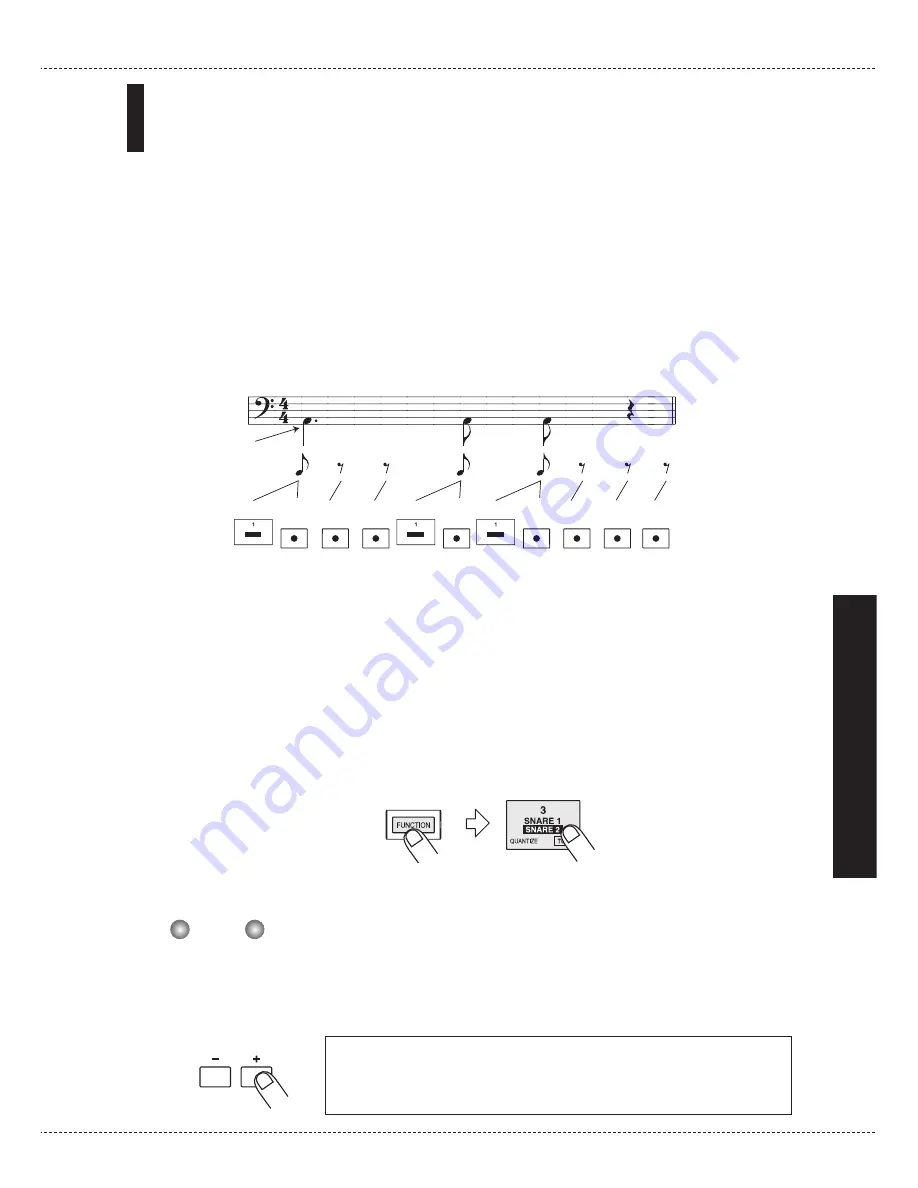
Pattern Step Recording
This section describes step recording, which allows you to enter and record each sound separately,
step by step, while the MRT-3 is in the stop condition. Even without mastering how to play the
pads in real time, you can easily create complex drum and bass patterns. And you don't need to
stop there, because you can even create patterns that would be impossible to play in real time.
For step recording, you select the shortest note that is to be used as unit, and you create the pattern
by pressing a pad (note) or the [REC] key (rest) for each step.
For example, to create the following bass drum pattern with step recording, select an eighth note
as smallest unit and make the entry as follows:
When the end of a pattern is reached, it loops automatically back to the beginning, allowing you
to add other instrument sounds, to complete the pattern. By hitting two pads at the same time, you
can enter two sounds in the same position.
1.
In pattern mode, select an empty user pattern.
2.
If required, select the kit for recording.
The kit selection procedure is the same as for manual play (
➝
p. 12).
3.
Press the [FUNCTION] key and then pad 3 (QUANTIZE).
The current quantize setting appears on the display. The minimum unit (shortest note) for
step recording is determined by this setting.
The quantize setting applies to all patterns.
4.
Use the [VALUE +/-] keys to set the quantize value (shortest note to be recorded).
The following settings are available.
4
• • • • • • • •
Quarter note
8
• • • • • • • •
Eighth note
12
• • • • • • •
Eighth triplet note
16
• • • • • • •
Sixteenth note
24
• • • • • • •
Sixteenth triplet note
32
• • • • • • •
Thirty-second note
48
• • • • • • •
Thirty-second triplet note
Hi
• • • • • • •
1 tick (1/96 of quarter note)
N
OTE
Bass drum
[REC]
[REC]
[Pad]
[Pad]
[Pad]
[REC]
[REC]
[REC]
[REC] [REC] [REC]
ZOOM
MRT-3
19
Using
P
atter
n
s
(Patter
n
Mode)
Summary of Contents for MRT-3
Page 1: ...Operation Manual 8 888 ...







































